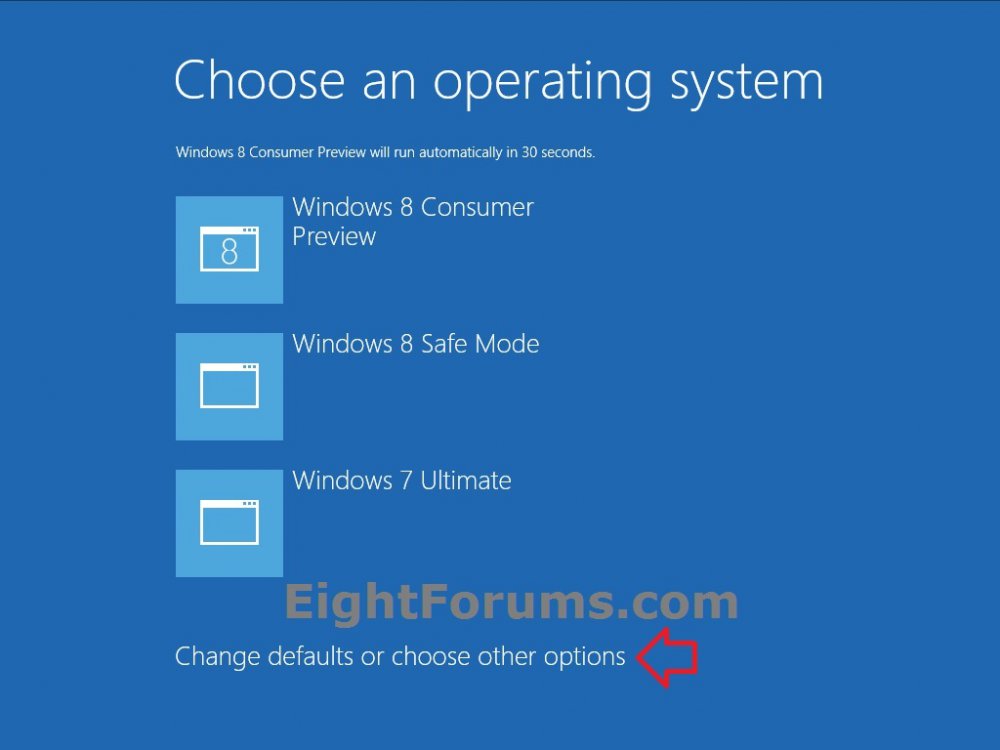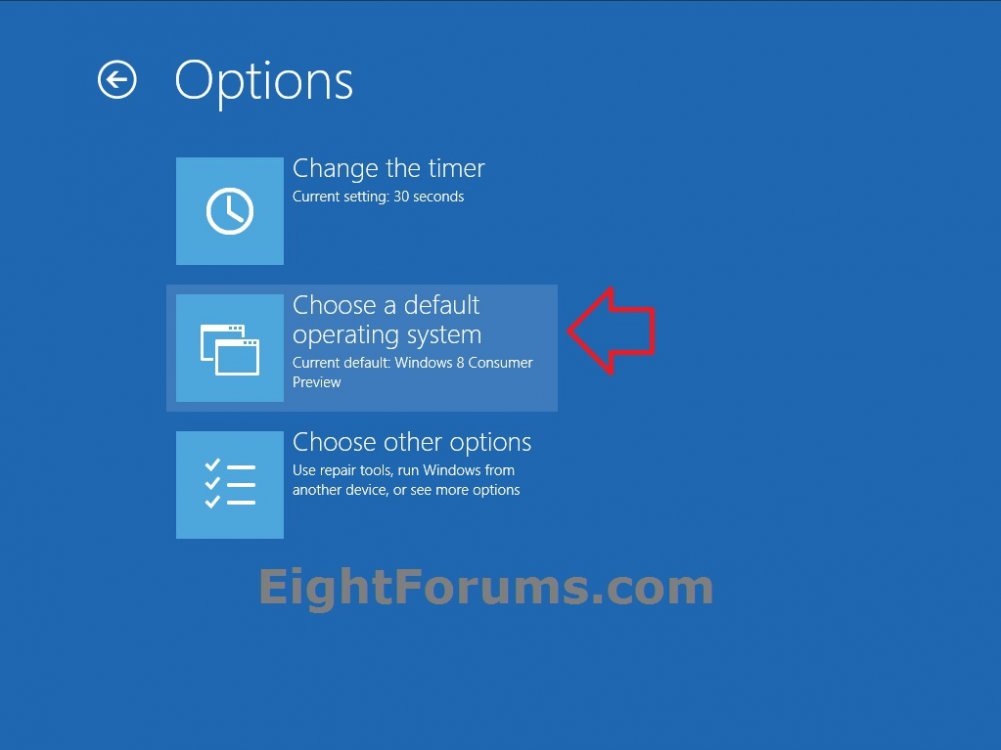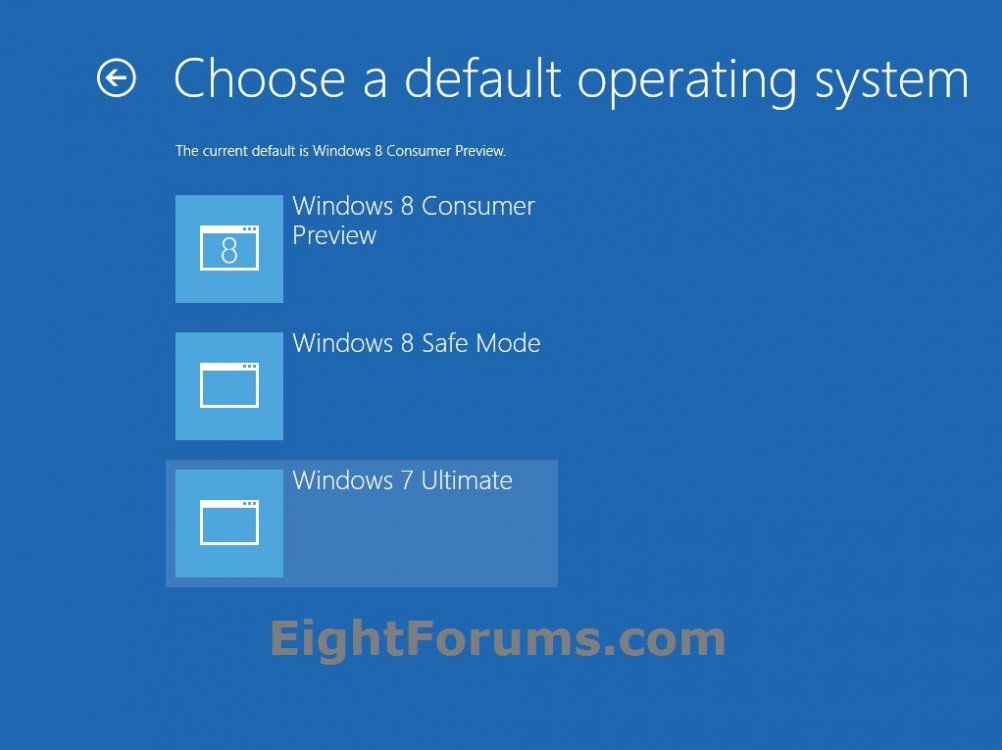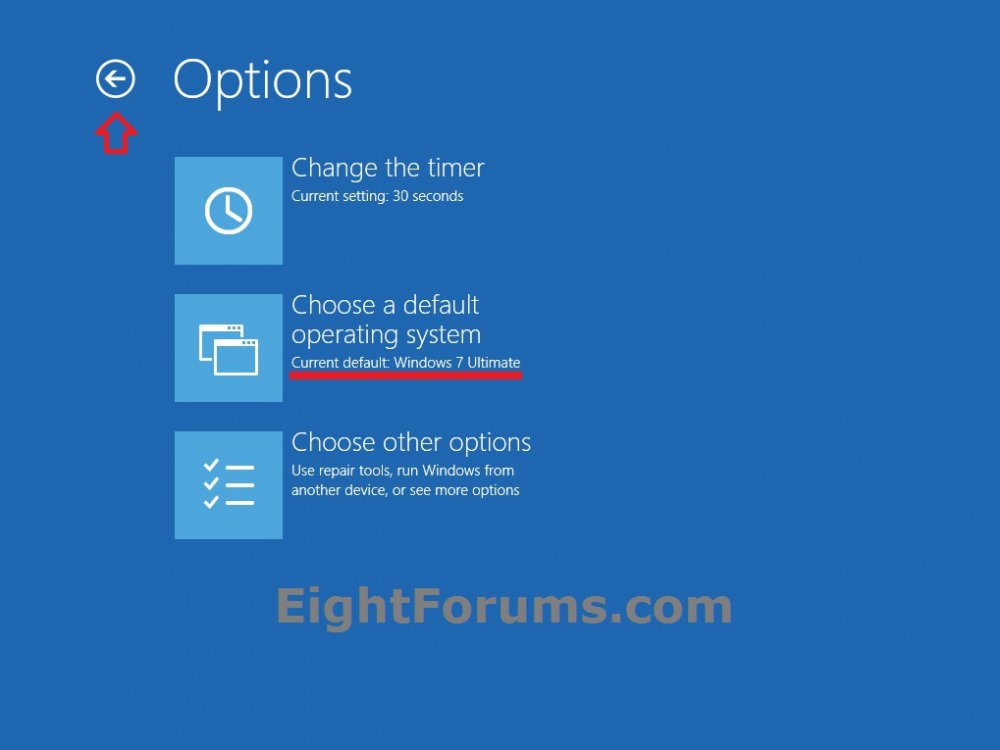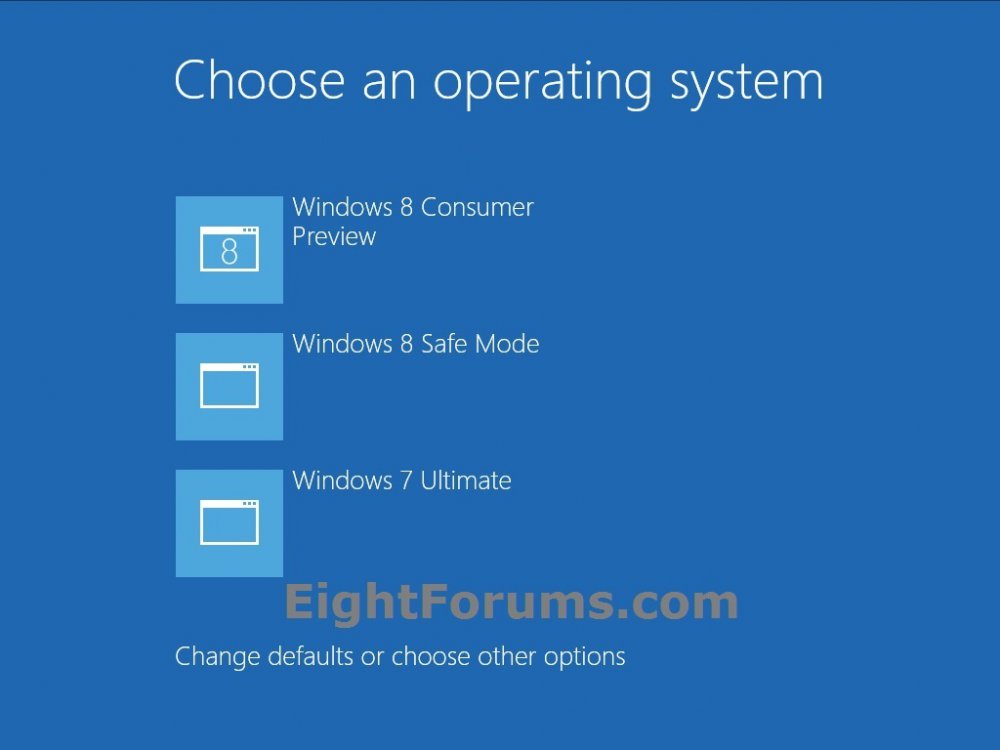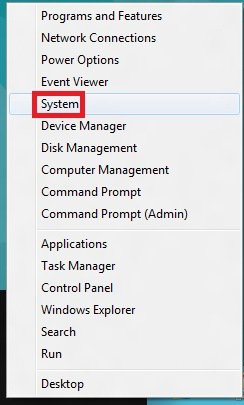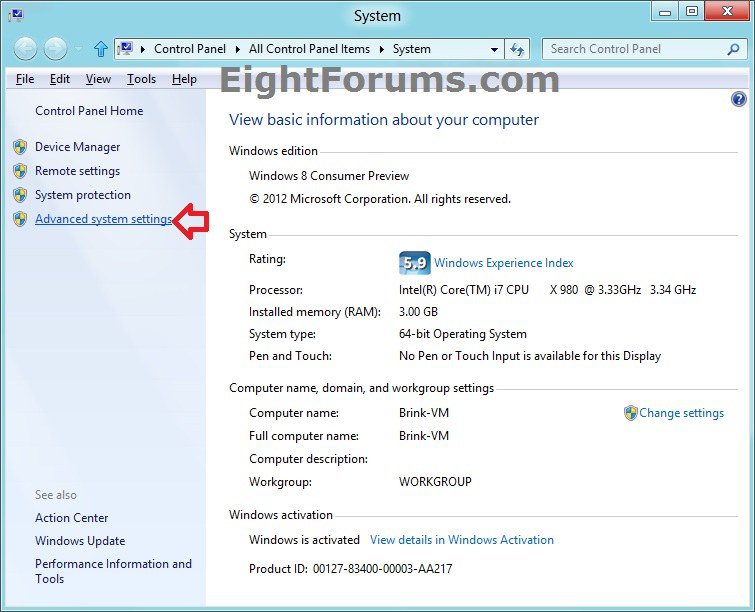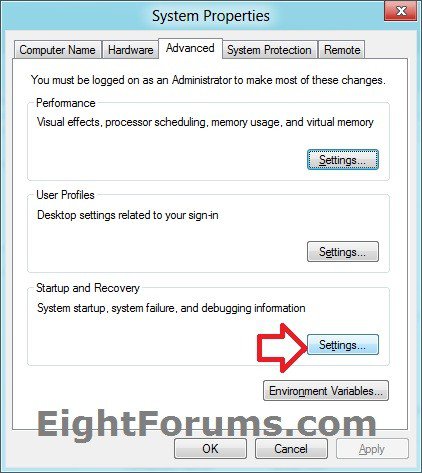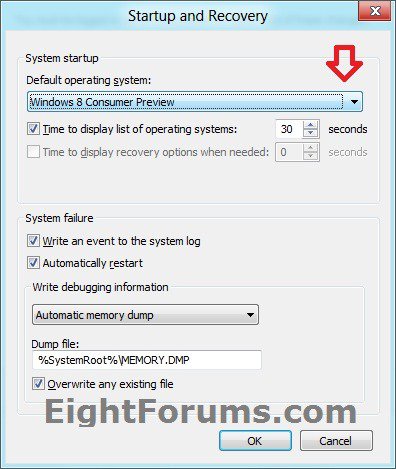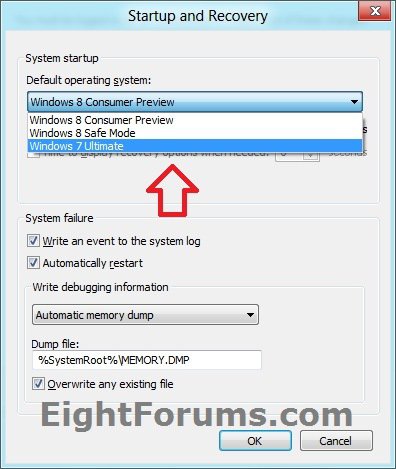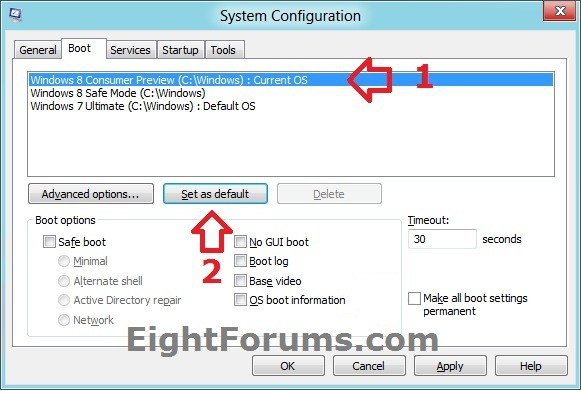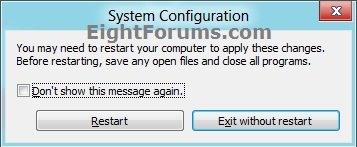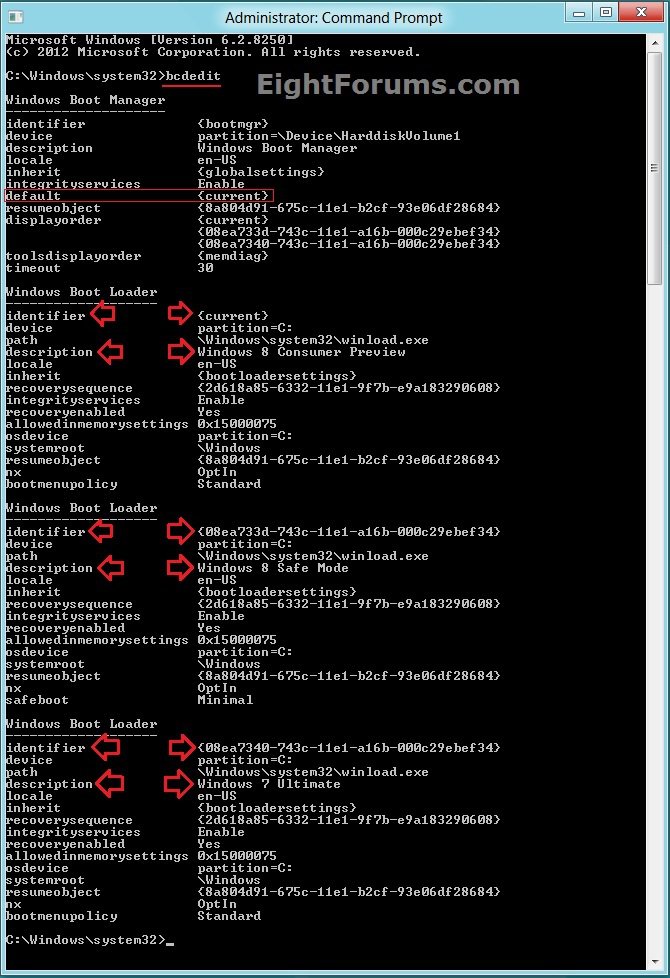How to Choose a Default Operating System to Run at Startup in Windows 8
If you have more than one operating system installed along with Windows 8 for a dual or multi boot system, then this will show you how to choose a default OS to run at startup automatically.
By default, the choosen default OS will always run at startup automatically after the default 30 seconds timeout period expires unless you choose another listed OS within the 30 seconds to have that OS run at startup instead.
By default, the choosen default OS will always run at startup automatically after the default 30 seconds timeout period expires unless you choose another listed OS within the 30 seconds to have that OS run at startup instead.
OPTION ONE
To Choose a Default OS in Startup Options at Boot
NOTE: Any user can do this option at boot.
1. Boot to the Startup Options screen.
2. Click on Change defaults or choose other options at the bottom. (see screenshot below)
3. Click on Choose a default operating system. (see screenshot below)
NOTE: This will also show you what your current default OS is.
4. Select (click on) a listed OS that you want to be the new default OS to run at startup automatically. (see screenshot below)
NOTE: You will also see what your current default OS is at the top.
5. Verify that this is the default OS you want, and click on the back arrow at the top left corner. (see screenshot below)
NOTE: If the default OS shown is not what you wanted, then repeat step 3 above.
6. You are finished, click on the OS that you want to run at startup for just this time. (see screenshot below)
OPTION TWO
To Choose a Default OS in Startup and Recovery
NOTE: You must be signed in as an administrator to be able to do this option.
1. Do either step 2 or 3 below for how you would like to open System.
2. Open the Power Users Task Menu, and click on System. (see screenshot below)
A) Go to step 4 below.
OR
3. Open the Control Panel (icons view) and click on the System icon.
A) Go to step 4 below.
4. In the left pane, click on the Advanced system settings link. (see screenshot below)
5. If prompted by UAC, then click on Yes, and close the System window above.
6. In the Advanced tab, click on the Settings button under Startup and Recovery. (see screenshot below)
7. Under System Startup, select a OS from the drop down menu that you want to be the default OS to run at startup automatically, then click on OK. (see screenshots below)
8. Click on OK. (see screenshot below step 6)
OPTION THREE
To Choose a Default OS in System Configuration (msconfig)
NOTE: You must be signed in as an administrator to be able to do this option.
1. From the Start screen, start typing msconfig and press Enter when finished.
NOTE: You could also press Windows+R to open the Run dialog, type msconfig, and click on OK.
2. If prompted by UAC, then click on Yes.
3. In the Boot tab, select (highlight) a listed OS that you want to be the new default OS to run at startup automatically, click on the Set as default button, and click on OK. (see screenshot below)
NOTE: The current default OS will have Default OS to the right of the listed OS.
4. When ready, click on the Restart button to apply. (see screenshot below)
WARNING: This will restart the computer immediately. Be sure to save and close anything open that you do not want to lose first.
OPTION FOUR
To Choose a Default OS in a Command Prompt with BCDEDIT
NOTE: You must be signed in as an administrator to be able to do this option.
2. In the command prompt, type bcdedit and press enter. (see screenshot below)
This will let you see what the default OS is under the Windows Boot Manager section, and to see the description (name) and identifier of the operating system(s) listed in Windows Boot Manager under the Windows Boot Loader section(s). For example, Windows 7 Ultimate (description) as {08ea7340-743c-11e1-a16b-000c29ebef34} (identifier).
3. In the elevated command prompt, type the command below for a listed OS that you want to be the default OS to start, and press Enter. (see screenshot below)
bcdedit /default {identifier}
For example: If I wanted to change the default OS to start from Windows 7 Ultimate (description) as {current} (identifier) to Windows 7 Ultimate (description) as {08ea7340-743c-11e1-a16b-000c29ebef34} (identifier), I would type this below and press Enter.
bcdedit /default {08ea7340-743c-11e1-a16b-000c29ebef34}
4. When finished, close the command prompt.
That's it,
Shawn
Related Tutorials
- How to Change Time to Wait before Default OS Runs Automatically at Startup in Windows 8
- How to Change the Default Operating System to Start in Windows 7 and Vista
- How to Delete an Operating System Listed in Windows Boot Manager
- How to Create a Windows 8 VHD at Boot to Dual Boot with Windows 7 or Vista
- How to Do a Dual Boot Installation with Windows 8 and Windows 7 or Vista
- How to Delete "Windows 8" in your Dual Boot with Windows 7 or Vista
- How to Delete "Windows 7" in your Dual Boot with Windows 8
- How to Enable or Disable the New Windows 8 Startup Options Boot Menu
- How to Add "Safe Mode" to Windows Boot Manager in Windows 8
- How to Enable or Disable "GUI Boot" in Windows
- How to Load SATA Driver During Windows 8 Setup
Attachments
Last edited:

